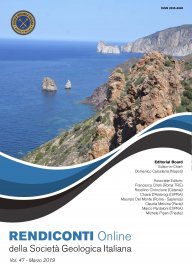
Co-seismic and post-seismic changes in groundwater discharge: first results from the epicentral region of the Central Italy earthquake 2016
Marco Giacopetti (a), Silvia Fabbrocino (b), Carlo Ianni (c), Marco Materazzi (a) & Gilberto Pambianchi (a)
(a) University of Camerino, School of Science and Technology - Geology Division, Via Gentile III da Varano, Camerino (MC) 62032, Italy.
(b) University of Naples Federico II, Department of Earth, Environment and Resources Sciences (DiSTAR), Largo San Marcellino, Napoli (NA) 80138, Italy.
(c) CIIP - Integrated Water Services, Viale della Repubblica, Ascoli Piceno (AP) 63100, Italy.
Corresponding author e-mail: marco.giacopetti@unicam.it;
DOI: https://doi.org/10.3301/ROL.2019.10
Volume: 47/2019
Pages: 52-57
Abstract
Short and mid-term effects of earthquakes on groundwater flow were documented in several studies.
The hydrogeological response of groundwater flow systems to earthquakes is very complex and due to significant changes in permeability. Such hydrologic changes may occur even at great distances from the epicentre and their magnitude may be related to the proximity to the earthquake focus.
Central Italy has been hit by several large earthquakes since August 2016. With reference to the carbonate aquifers located in the epicentral region, the following short term effects were observed: a significant increase of the spring discharges and the disappearance of several perched springs.
The deep-seated fault movements and fluid redistribution may cause water-level fluctuations as well as changes in groundwater discharge and composition. This study describes a preliminary characterization of such processes.
Keywords
Get Full Text